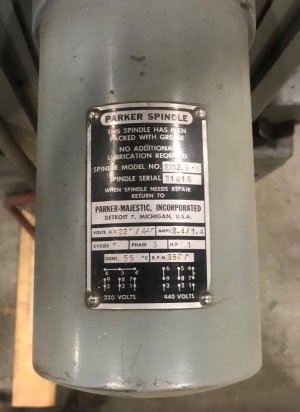- Joined
- Oct 16, 2019
- Messages
- 6,574
I'm exploring my VFD options for my new surface grinder. It has a 1 hp motor.
I have 110V in the location for the grinder so I'm looking at this VFD ass compared to running a new 220v circuit.
 www.tecowestinghouse.ca
I have a Teco for my mill and I'm familiar with it's programming.
www.tecowestinghouse.ca
I have a Teco for my mill and I'm familiar with it's programming.
For this application, I'm thinking that forward and speed control would be the only controls necessary?

I have 110V in the location for the grinder so I'm looking at this VFD ass compared to running a new 220v circuit.
L510-101-H1-U - TECO-Westinghouse Motors (Canada) Inc.
For this application, I'm thinking that forward and speed control would be the only controls necessary?


